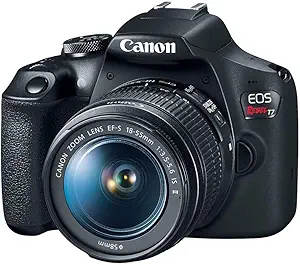Landscape photography is one of the most captivating genres in the world of photography. It transcends beyond just snapping a pretty view—it’s about telling a story, evoking emotion, and capturing the grandeur or serenity of nature through a lens. Whether it’s the golden hues of a desert at sunset or the mist rolling over mountain peaks, landscape photography allows photographers to preserve a fleeting moment in time and share it with the world.
Table of Contents
But what exactly defines landscape photography? What gear is needed? What are the techniques that can turn a good landscape photo into a great one? This in-depth guide covers everything you need to know about landscape photography—its definition, purpose, tips, tools, and more.
Understanding Landscape Photography
Landscape photography focuses on capturing natural scenery in a visually compelling way. These images typically emphasize the vastness and beauty of the natural world—mountains, valleys, forests, deserts, oceans, and more. However, landscape photography isn’t limited to nature. Urban landscapes and industrial settings can also be explored in this genre.
The primary goal of landscape photography is to immerse viewers in a scene, evoke emotion, and showcase the planet’s diversity and majesty. Unlike portraits or street photography that focus on people, landscape photography typically features little or no human presence.
A Brief History of Landscape Photography
Landscape painting existed long before photography. However, the invention of the camera in the early 19th century gave artists a new medium. Some of the earliest landscape photos date back to the 1820s and 1830s. Photographers like Ansel Adams revolutionized the genre in the 20th century with dramatic black-and-white images of the American wilderness, especially Yosemite National Park.
Adams’s work emphasized light, contrast, and composition—elements that still define great landscape photography today.
Canon EOS Rebel T7 DSLR Camera with 18-55mm Lens
Types of Landscape Photography
There are several sub-genres within landscape photography, each with its own focus:
1. Nature and Wilderness Landscapes
This is the most traditional form, involving untouched nature—mountains, forests, rivers, lakes, and skies. These scenes often aim to celebrate the raw beauty of the Earth.
2. Seascapes
Coastal scenes, crashing waves, and peaceful oceans fall into this category. The movement of water offers creative opportunities for long exposure shots.
3. Urban Landscapes
Though not traditional, urban and cityscapes are increasingly popular. Skyscrapers, bridges, and city lights can create stunning compositions.
4. Astrophotography Landscapes
This involves capturing landscapes under a star-filled sky. Milky Way photography, meteor showers, and northern lights fall under this category.
5. Desert Landscapes
Sand dunes, cracked earth, and stark skies are common themes. The minimalism of desert photography appeals to many artists.
Essential Gear for Landscape Photography
While a good eye and patience are key, the right gear can make all the difference in capturing compelling landscape shots.
1. Camera
You don’t need the most expensive DSLR to shoot landscapes. However, a camera with manual settings and a wide dynamic range is beneficial. Mirrorless cameras are also gaining popularity for their lightweight and performance.
2. Lenses
Wide-angle lenses (e.g., 16-35mm) are ideal for capturing expansive scenes. Telephoto lenses (70-200mm) are also useful for isolating details or compressing distances.
3. Tripod
Essential for stability, especially for long exposure shots. A sturdy tripod reduces blur and allows for better framing.
4. Filters
- Polarizing filters reduce reflections and enhance the colors of the sky and foliage.
- ND filters (neutral density) allow for longer exposures, especially useful for moving water or clouds.
5. Drone (Optional)
Aerial landscape photography is gaining popularity. Drones provide a unique perspective that’s hard to achieve from the ground.
Techniques to Improve Your Landscape Photography
Capturing a stunning landscape isn’t just about pointing and shooting. The best photographers plan their shots and consider multiple elements before pressing the shutter button.
1. Use the Rule of Thirds
Position your horizon or subject off-center for a more dynamic composition. Many cameras and phones have grid overlays to help with this.
2. Master Lighting
Golden hour (just after sunrise and before sunset) offers warm, soft light that enhances the landscape. Blue hour (right before sunrise and after sunset) is perfect for moody shots.
3. Include Foreground Interest
Adding an element in the foreground—like rocks, flowers, or water—gives the viewer a sense of depth and scale.
4. Pay Attention to the Weather
Dramatic clouds, fog, snow, and stormy skies can transform an ordinary scene into something extraordinary.
5. Shoot in RAW
Shooting in RAW preserves the most data and gives you more flexibility during editing.
6. Use Long Exposures
Capturing motion—like flowing water or drifting clouds—can create a dreamy, surreal effect.
The Role of Post-Processing
Editing is a crucial step in landscape photography. Software like Adobe Lightroom and Photoshop allows photographers to fine-tune exposure, contrast, color balance, and sharpness.
However, the goal isn’t to fake the scene—it’s to enhance the mood and bring out the beauty that was already there.
Key Edits Include:
- Adjusting shadows and highlights
- Boosting saturation and vibrance
- Sharpening
- Cropping and straightening horizons
Why Landscape Photography Matters
Beyond its aesthetic appeal, landscape photography serves deeper purposes:
- Environmental awareness: Powerful images can advocate for conservation and sustainability.
- Mindfulness: Spending time in nature and capturing its beauty is therapeutic for many.
- Cultural documentation: Some landscapes change over time. Photography preserves how they once looked.
- Travel inspiration: Stunning landscape images fuel our desire to explore new places.
Getting Started with Landscape Photography
If you’re just starting, here are a few steps to get you on the right path:
- Study the masters – Explore the work of photographers like Ansel Adams, Galen Rowell, and contemporary creators like Max Rive and Michael Shainblum.
- Start local – You don’t need to travel to Iceland or Patagonia. Explore your nearby parks, rivers, and hills.
- Practice patience – Sometimes, the perfect light or moment takes hours—or even days—to appear.
- Experiment – Try different lenses, angles, times of day, and editing styles.
- Join a community – Online forums, photography clubs, and social media groups can provide inspiration and feedback.
Conclusion
Landscape photography is much more than beautiful scenery—it’s about storytelling, emotion, and connection with nature. Whether you’re a beginner with a smartphone or an advanced photographer with top-tier gear, there’s always more to learn and explore in this genre.
With the right techniques, a curious eye, and a bit of patience, you can turn everyday vistas into breathtaking works of art.
Frequently Asked Questions (FAQs)
1. Do I need an expensive camera for landscape photography?
Not necessarily. While higher-end cameras offer more control and better image quality, you can start with a basic DSLR, mirrorless camera, or even a smartphone.
2. What time of day is best for landscape photography?
Golden hour (shortly after sunrise and before sunset) and blue hour (just before sunrise and after sunset) offer the most flattering natural light.
3. How can I make my landscape photos more interesting?
Use leading lines, include a strong foreground element, apply the rule of thirds, and wait for compelling light or weather conditions.
4. Should I always use a tripod for landscape photography?
While not mandatory, a tripod greatly improves image sharpness and is essential for long exposures.
5. Can I do landscape photography in the city?
Absolutely. Urban landscapes and cityscapes are valid forms of landscape photography, offering their own aesthetic and narrative.
6. What is the best focal length for landscape photography?
Wide-angle lenses (14-35mm) are popular, but mid-range and telephoto lenses can help isolate subjects and compress scenes creatively.

